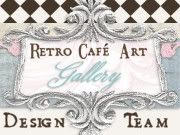So let's start out with some basics. When I first looked at the copics, I had no idea what those crazy letters and numbers used to categorize them meant. Here's what they look like:
 The letters stand for the color category--e for earth tones, b for blue etc. The numbers relate to the shades. The first number tells you how much gray is in the color 0 being none, and 9 being a lot. The lower the number the brighter the color. The second number relates to the darkness of the color. The higher the number the darker the color. If you have a RV09, it will be a bright deep red, while a rv99 will be a duller gray deep red. Understanding the number/letters is important when it comes to blending--since it's easier to blend within a color family.
The letters stand for the color category--e for earth tones, b for blue etc. The numbers relate to the shades. The first number tells you how much gray is in the color 0 being none, and 9 being a lot. The lower the number the brighter the color. The second number relates to the darkness of the color. The higher the number the darker the color. If you have a RV09, it will be a bright deep red, while a rv99 will be a duller gray deep red. Understanding the number/letters is important when it comes to blending--since it's easier to blend within a color family.Now for some coloring:
When it comes to using the markers it's important to remember that they are alcohol based--which is why they are low toxicity--but the alcohol causes them to dry quickly. To get an even color distribution it's important really saturate the paper. The best way to achieve this is to color in small circles. When you work with more than one color for shading, you'll get smoother effects if you start with a well saturated base.
One of the best features of these markers is that it;s impossipble to contaminate the tips. If you get one color on a nib of another, simply color it off on a scrap piece of paper.
Tip-to-Tip blending:
Since there's no risk of color contaminating you can blend in small areas by touching the tip of one color, to the tip of another and then coloring with it. You should always color with your lightest color.
Take a look at some examples:
 The larger circles were done with R32 and a blender pen. I touched the pink to the pen and colored in small circles working up to the top so that's pink into white. While it was still wet, I gently went in with the r32 on the bottom end and blended it some more. When I was done, I colored off the blending pen and it was nice and clean.
The larger circles were done with R32 and a blender pen. I touched the pink to the pen and colored in small circles working up to the top so that's pink into white. While it was still wet, I gently went in with the r32 on the bottom end and blended it some more. When I was done, I colored off the blending pen and it was nice and clean.This is a great technique for small areas, take a look at the little circles, I blended r32 with y21 using the tip to tip method.
Tomorrow, I'll post some more blending tutorials.









1 comment:
Oh great Bianca, like I need another art material to lust after ;) Thanks for the tutorial, this is really cool and I LOVE your journal! Miss you guys!
Post a Comment